Grow Spinach at Home, and unlock a world of fresh, vibrant greens right at your fingertips! Imagine stepping into your backyard and harvesting crisp, delicious spinach for your salad, smoothie, or favorite dish. No more trips to the grocery store, no more wilted leaves – just pure, homegrown goodness.
For centuries, spinach has been a staple in diets across the globe, revered not only for its nutritional powerhouse but also for its versatility in the kitchen. From ancient Persia, where it’s believed to have originated, to its adoption by Catherine de Medici in 16th-century France (leading to dishes “à la Florentine”), spinach boasts a rich and fascinating history. But you don’t need royal connections to enjoy this leafy green!
In today’s busy world, knowing how to grow spinach at home is more important than ever. We’re all looking for ways to eat healthier, save money, and connect with nature. This DIY guide is your key to achieving all three! I’m going to share simple, effective tricks and hacks that will empower you to cultivate a thriving spinach patch, even if you have limited space or gardening experience. Get ready to transform your garden (or balcony!) into a spinach haven!
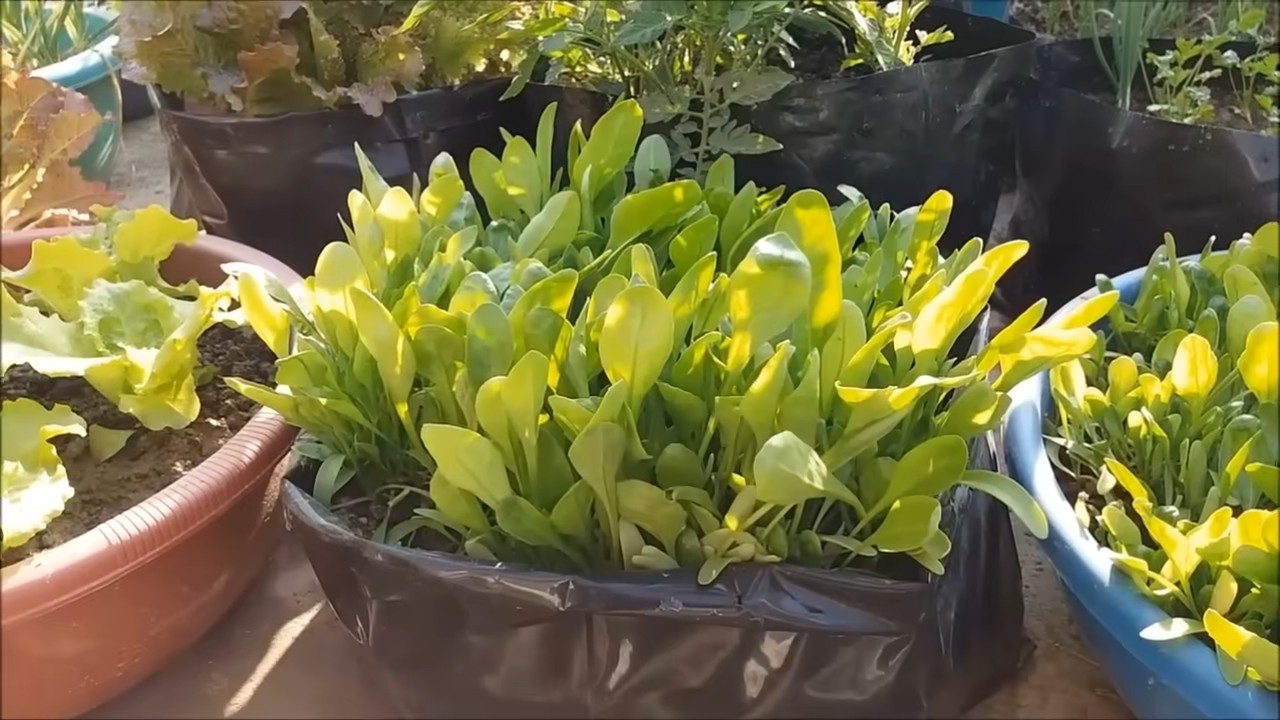
Growing Spinach at Home: A Beginner’s Guide
Hey there, fellow gardening enthusiasts! I’m so excited to share my experiences with growing spinach at home. It’s surprisingly easy, incredibly rewarding, and nothing beats the taste of fresh, homegrown spinach in your salads, smoothies, or cooked dishes. This guide will walk you through everything you need to know, from choosing the right variety to harvesting your leafy greens. Let’s get started!
Choosing the Right Spinach Variety
Before you even think about planting, you need to pick the perfect spinach variety for your climate and preferences. Here are a few popular options:
* Savoy Spinach: These varieties have crinkled, curly leaves. They’re cold-hardy and great for fall and winter harvests. Examples include ‘Bloomsdale’ and ‘Melody’.
* Smooth-Leaf Spinach: As the name suggests, these have smooth, flat leaves. They’re easier to clean than Savoy types. ‘Space’ and ‘Tyee’ are popular choices.
* Semi-Savoy Spinach: A happy medium between the two, offering some texture but not as much as Savoy. ‘Regiment’ is a good example.
* Heat-Resistant Spinach: If you live in a warmer climate, look for varieties like ‘Malabar’ or ‘New Zealand’ spinach. While technically not true spinach, they tolerate heat much better and offer a similar flavor and texture.
Consider your local climate and the time of year you’ll be planting when making your decision. I personally love ‘Bloomsdale’ for its robust flavor and cold hardiness.
Preparing Your Spinach Bed
Spinach thrives in well-drained soil that’s rich in organic matter. Here’s how to get your garden bed ready:
* Location, Location, Location: Choose a spot that gets at least 4-6 hours of sunlight per day. Spinach can tolerate some shade, especially in warmer climates, but it needs sufficient sunlight to grow well.
* Soil Testing (Optional but Recommended): A soil test can tell you the pH level and nutrient content of your soil. Spinach prefers a slightly acidic to neutral pH (around 6.5 to 7.0). You can purchase a soil testing kit at most garden centers or send a sample to your local agricultural extension office.
* Amending the Soil: Whether you test your soil or not, it’s always a good idea to amend it with organic matter. Compost, well-rotted manure, or leaf mold are all excellent choices. Work the organic matter into the top 6-8 inches of soil. This will improve drainage, aeration, and nutrient availability.
* Fertilizing: Spinach is a heavy feeder, so it benefits from a pre-planting fertilizer application. Use a balanced fertilizer (e.g., 10-10-10) or an organic fertilizer formulated for leafy greens. Follow the instructions on the fertilizer package for application rates.
* Leveling the Bed: Rake the soil smooth and level to create a uniform surface for planting.
Planting Spinach Seeds
Now for the fun part – planting! You can start spinach seeds indoors or directly sow them in the garden. I prefer direct sowing because spinach doesn’t always transplant well.
1. Timing is Key: Spinach is a cool-season crop, meaning it grows best in cooler temperatures. Plant it in early spring or late summer/early fall. In my area, I aim for planting in late March/early April for a spring harvest and late August/early September for a fall harvest.
2. Sowing the Seeds: Sow the seeds about ½ inch deep and 1 inch apart in rows that are 12-18 inches apart. You can use a garden trowel or your finger to create small furrows for the seeds.
3. Covering the Seeds: Gently cover the seeds with soil and lightly pat it down.
4. Watering: Water the soil thoroughly but gently after planting. Keep the soil consistently moist until the seeds germinate.
5. Thinning Seedlings: Once the seedlings emerge (usually in 5-10 days), thin them to about 3-6 inches apart. This will give the plants enough room to grow and prevent overcrowding. You can eat the thinned seedlings as microgreens!
Caring for Your Spinach Plants
Once your spinach plants are established, it’s important to provide them with the care they need to thrive.
* Watering: Spinach needs consistent moisture, especially during hot weather. Water deeply and regularly, aiming for about 1 inch of water per week. Avoid overhead watering, as this can promote fungal diseases. Drip irrigation or soaker hoses are ideal.
* Weeding: Keep the garden bed free of weeds, which can compete with spinach for nutrients and water. Hand-pull weeds carefully to avoid disturbing the spinach roots. Mulching with straw or shredded leaves can help suppress weed growth.
* Fertilizing (Side-Dressing): About 3-4 weeks after planting, side-dress your spinach plants with a nitrogen-rich fertilizer. This will encourage leafy growth. You can use a commercial fertilizer or an organic option like fish emulsion or compost tea. Follow the instructions on the fertilizer package for application rates.
* Pest Control: Spinach is generally pest-resistant, but it can be susceptible to aphids, leaf miners, and flea beetles. Inspect your plants regularly for signs of infestation.
* Aphids: These tiny insects suck sap from the leaves, causing them to curl and distort. You can control aphids with a strong spray of water, insecticidal soap, or neem oil.
* Leaf Miners: These insects tunnel inside the leaves, leaving unsightly trails. Remove and destroy infested leaves. You can also use row covers to prevent leaf miners from laying their eggs on the plants.
* Flea Beetles: These small, jumping beetles chew tiny holes in the leaves. You can control flea beetles with insecticidal soap, neem oil, or diatomaceous earth.
* Bolting Prevention: Bolting is when spinach plants send up a flower stalk and the leaves become bitter. This is usually triggered by hot weather or long days. To prevent bolting, plant spinach in partial shade during the summer months, water regularly, and harvest the leaves frequently. Choose bolt-resistant varieties.
Harvesting Your Spinach
The best part of growing spinach is, of course, harvesting it!
1. When to Harvest: You can start harvesting spinach leaves when they are about 4-6 inches long. This is usually about 4-6 weeks after planting.
2. How to Harvest: You can harvest the entire plant at once by cutting it off at the base, or you can harvest individual leaves as needed. I prefer to harvest individual leaves, as this allows the plant to continue producing for a longer period.
3. Harvesting Technique: Use a sharp knife or scissors to cut the leaves off at the base of the plant. Avoid tearing the leaves, as this can damage the plant.
4. Succession Planting: To ensure a continuous supply of spinach, plant new seeds every 2-3 weeks. This is called succession planting.
Storing Your Spinach
Freshly harvested spinach is best used immediately, but you can store it in the refrigerator for up to a week.
* Washing: Wash the spinach thoroughly to remove any dirt or debris.
* Drying: Dry the spinach leaves thoroughly using a salad spinner or by patting them dry with a clean towel.
* Storage: Store the spinach in a plastic bag or container lined with a paper towel. The paper towel will absorb excess moisture and help keep the spinach fresh.
Troubleshooting Common Spinach Problems
Even with the best care, you might encounter some problems when growing spinach. Here are a few common issues and how to address them:
* Yellowing Leaves: This can be caused by a nutrient deficiency (usually nitrogen), overwatering, or disease. Amend the soil with compost or fertilizer, ensure proper drainage, and treat any diseases with appropriate fungicides.
* Stunted Growth: This can be caused by poor soil, lack of sunlight, or pest infestation. Amend the soil with organic matter, ensure the plants are getting enough sunlight, and control any pests.
* Bitter Taste: This is usually caused by bolting. Prevent bolting by planting spinach in partial shade during the summer months, watering regularly, and harvesting the leaves frequently.
Enjoying Your Homegrown Spinach
Now that you’ve successfully grown your own spinach, it’s time to enjoy the fruits (or rather, leaves!) of your labor. Here are a few ideas:
* Salads: Add fresh spinach to your favorite salads for a boost of nutrients and flavor.
* Smoothies: Blend spinach into your smoothies for a healthy and delicious green drink.
* Sautéed Spinach: Sauté spinach with garlic and olive oil for a simple and flavorful side dish.
* Spinach Dip: Use fresh spinach to make a creamy and delicious spinach dip.
* Spinach Pie:
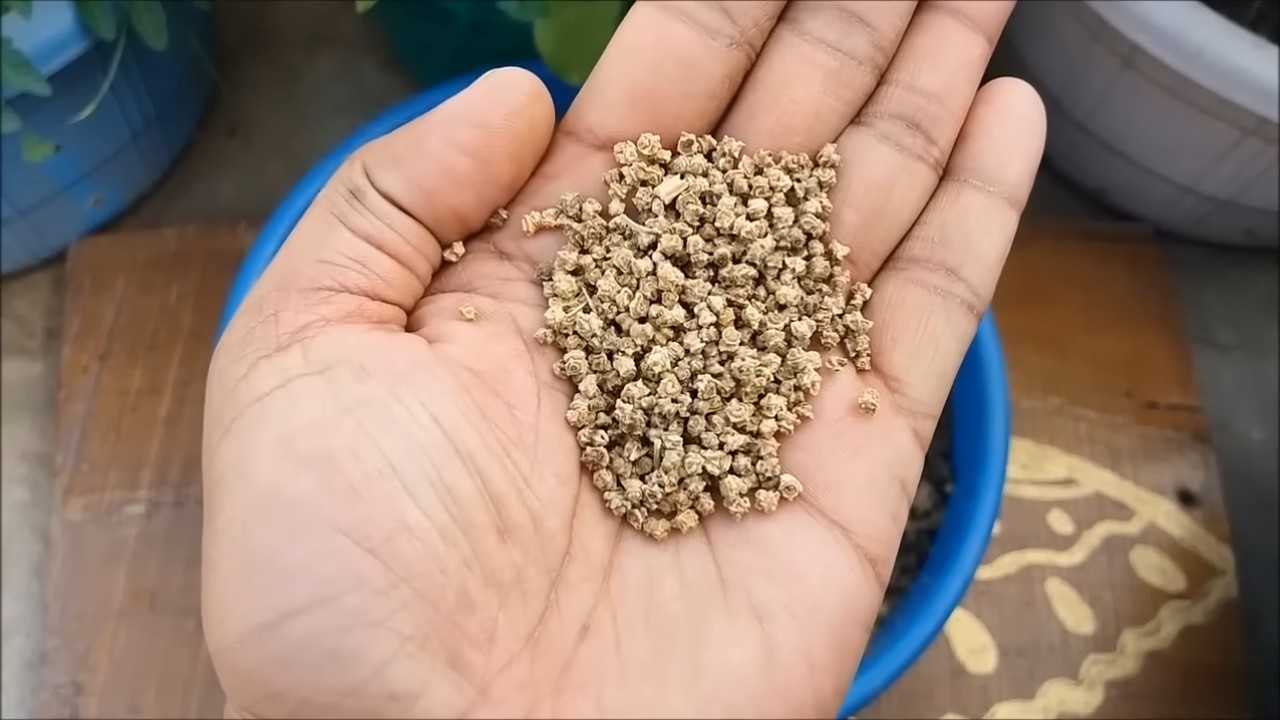
Conclusion
So, there you have it! Growing spinach at home is not only achievable, but it’s also incredibly rewarding. Forget those limp, pre-packaged greens from the supermarket. Imagine stepping into your garden or onto your balcony and harvesting vibrant, crisp spinach leaves bursting with flavor and nutrients. This DIY approach to fresh produce is a game-changer, offering a superior taste and texture that you simply can’t replicate with store-bought options.
Why is this a must-try? Because you’re taking control of your food source. You know exactly what goes into your spinach – no hidden pesticides, no mysterious preservatives, just pure, unadulterated goodness. Plus, the satisfaction of nurturing a plant from seed to table is an experience that connects you to nature in a profound way. It’s a therapeutic activity that can reduce stress and boost your overall well-being.
But the benefits don’t stop there. Growing your own spinach is also a cost-effective way to enjoy this leafy green. Think about how often you buy spinach at the grocery store. Those costs can quickly add up. With a small investment in seeds, soil, and a little bit of your time, you can have a continuous supply of fresh spinach throughout the growing season.
And let’s talk about variations! Feel free to experiment with different varieties of spinach. Try baby spinach for tender, delicate leaves perfect for salads. Or, opt for savoy spinach for its crinkled texture and robust flavor, ideal for cooking. You can even try growing different types of spinach at the same time to have a variety of flavors and textures at your fingertips.
Consider companion planting to enhance your spinach’s growth and deter pests. Marigolds, for example, are known to repel nematodes and other harmful insects. Planting them alongside your spinach can help protect your crop and ensure a bountiful harvest. Similarly, planting radishes nearby can help break up the soil and improve drainage, which spinach loves.
Another variation to consider is container gardening. If you don’t have a traditional garden, don’t worry! Spinach thrives in containers, making it perfect for balconies, patios, or even indoor spaces with sufficient sunlight. Just make sure to choose a container that’s at least 6 inches deep and has good drainage.
Don’t be afraid to experiment with different growing mediums as well. While traditional potting soil works well, you can also try using a soilless mix or even a hydroponic system. These alternative growing methods can provide your spinach with the nutrients it needs while minimizing the risk of soilborne diseases.
We wholeheartedly encourage you to give this DIY trick a try. It’s easier than you might think, and the rewards are well worth the effort. Start small, learn as you go, and don’t be discouraged by initial setbacks. Gardening is a journey, and every mistake is an opportunity to learn and improve.
Once you’ve harvested your first batch of homegrown spinach, we’d love to hear about your experience! Share your tips, tricks, and photos with us in the comments below. Let’s create a community of spinach-growing enthusiasts and inspire others to embrace the joys of homegrown produce. So, grab your seeds, get your hands dirty, and start growing your own delicious, nutritious spinach today! You’ll be amazed at the difference it makes. Remember, fresh, homegrown **grow spinach at home** is the best spinach!
Frequently Asked Questions (FAQ)
What is the best time of year to plant spinach?
Spinach is a cool-season crop, meaning it thrives in cooler temperatures. The best time to plant spinach is in early spring or early fall. In the spring, plant your seeds as soon as the ground can be worked, typically 4-6 weeks before the last expected frost. For a fall harvest, plant your seeds 6-8 weeks before the first expected frost. Avoid planting spinach during the heat of summer, as high temperatures can cause it to bolt (go to seed) and become bitter.
How much sunlight does spinach need?
Spinach needs at least 3-6 hours of sunlight per day to grow properly. While it can tolerate some shade, especially during the hottest part of the day, insufficient sunlight can result in leggy growth and reduced yields. If you’re growing spinach indoors, make sure to provide it with supplemental lighting, such as grow lights, to ensure it gets enough light.
What kind of soil is best for growing spinach?
Spinach prefers well-drained soil that is rich in organic matter. The ideal soil pH for spinach is between 6.5 and 7.0. Before planting, amend your soil with compost or other organic matter to improve its fertility and drainage. Avoid planting spinach in heavy clay soil, as this can lead to waterlogging and root rot.
How often should I water my spinach plants?
Spinach needs consistent moisture to thrive. Water your plants regularly, especially during dry spells, to keep the soil consistently moist but not waterlogged. Avoid overhead watering, as this can increase the risk of fungal diseases. Instead, water at the base of the plants or use a soaker hose.
How do I fertilize my spinach plants?
Spinach is a heavy feeder, meaning it requires a good supply of nutrients to grow properly. Fertilize your plants with a balanced fertilizer, such as a 10-10-10 formula, every 2-3 weeks. You can also use organic fertilizers, such as compost tea or fish emulsion. Avoid over-fertilizing, as this can lead to excessive leaf growth and reduced yields.
How do I prevent pests and diseases from attacking my spinach plants?
Several pests and diseases can affect spinach plants, including aphids, leaf miners, and downy mildew. To prevent these problems, practice good garden hygiene. Remove any weeds or debris from around your plants, and water them properly to avoid creating a humid environment that encourages fungal diseases. You can also use insecticidal soap or neem oil to control pests. For downy mildew, choose disease-resistant varieties of spinach and ensure good air circulation around your plants.
When and how do I harvest spinach?
Spinach can be harvested as soon as the leaves are large enough to eat, typically about 4-6 weeks after planting. To harvest, simply cut the outer leaves with a sharp knife or scissors, leaving the inner leaves to continue growing. You can also harvest the entire plant at once by cutting it off at the base. Harvest spinach in the morning, when the leaves are crisp and cool.
Can I grow spinach indoors?
Yes, you can grow spinach indoors, provided you have a sunny window or grow lights. Choose a container that is at least 6 inches deep and has good drainage. Use a well-draining potting mix and water your plants regularly. Fertilize them every 2-3 weeks with a balanced fertilizer.
What are some common problems when growing spinach?
Some common problems when growing spinach include bolting (going to seed), leaf miners, and downy mildew. Bolting can be prevented by planting spinach in the spring or fall, when temperatures are cooler. Leaf miners can be controlled with insecticidal soap or neem oil. Downy mildew can be prevented by choosing disease-resistant varieties of spinach and ensuring good air circulation around your plants.
How do I store harvested spinach?
To store harvested spinach, wash it thoroughly and pat it dry. Wrap the spinach in a paper towel and place it in a plastic bag in the refrigerator. Spinach can be stored for up to a week in this manner.


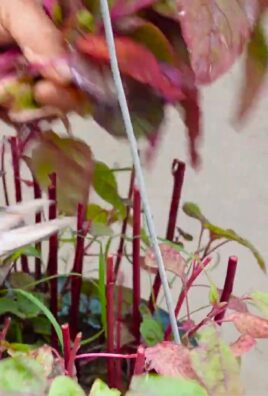
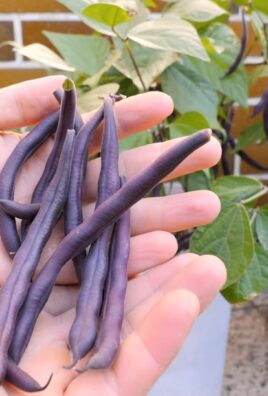
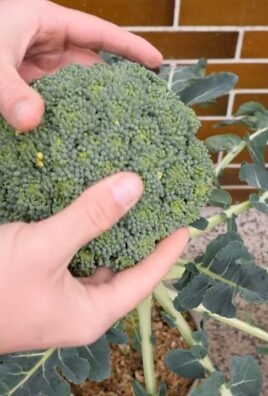
Leave a Comment